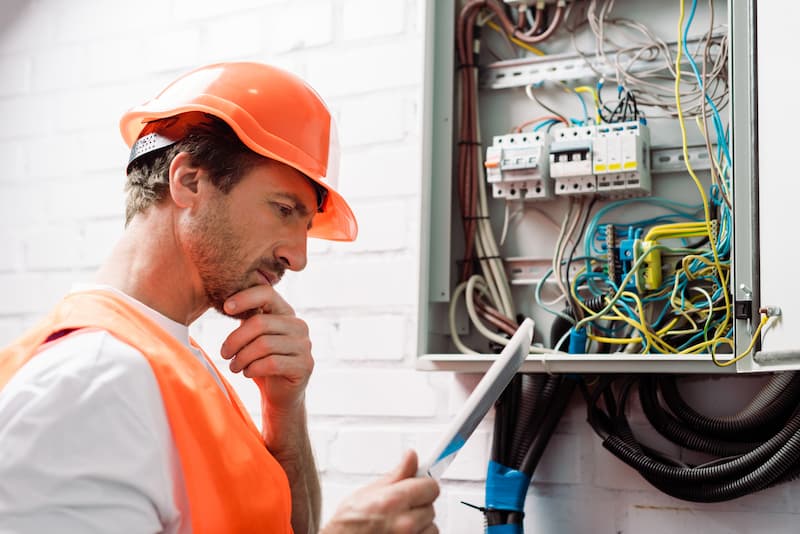Tailored mechanical engineering industry support services for your business needs.
Tailored mechanical engineering industry support services for your business needs.
Blog Article
Leading Tips for Effective Electric System Troubleshooting
Repairing electrical systems requires a methodical technique, grounded in a comprehensive understanding of electric principles and safety and security protocols. The nuances of efficient troubleshooting expand beyond mere technological understanding; comprehending just how to document findings and prioritize safety can dramatically influence outcomes.
Understand the Basics
Comprehending the fundamentals of electrical systems is vital for reliable troubleshooting, as a strong foundation allows professionals to detect and deal with concerns much more effectively. A comprehensive understanding of electrical concepts, such as voltage, existing, resistance, and power, is important in determining the source of troubles. Voltage is the electrical prospective distinction that drives current with a circuit, while resistance opposes the flow of existing, impacting the total capability of the system.
Familiarity with circuit components, consisting of resistors, capacitors, diodes, and switches over, is also paramount. Each part plays a distinctive role in circuit habits and can impact performance when malfunctioning. In addition, understanding collection and identical circuit arrangements is vital, as these arrangements affect the circulation of voltage and current within the system.
In addition, knowledge of security methods is indispensable. Specialists need to recognize potential threats, such as shock and short circuits, to apply risk-free troubleshooting techniques. By mastering these fundamental ideas, service technicians improve their capability to perform efficient diagnostics and repair services, inevitably leading to improved performance and dependability of electric systems. This foundational understanding is the cornerstone of effective troubleshooting undertakings.
Gather Necessary Equipment
Effective troubleshooting of electric systems calls for the ideal set of devices to diagnose and settle problems accurately. Vital tools include a multimeter, which gauges voltage, existing, and resistance, enabling for accurate analyses of electrical parts.
Furthermore, shielded hand devices such as screwdrivers, pliers, and wire strippers are vital for safely manipulating electrical links. It is likewise recommended to have a circuit tester available to validate the presence of voltage in outlets and cables. For even more complicated systems, a thermal imaging electronic camera can assist identify overheating parts, showing possible failings.

Adhere To a Methodical Method
Having gathered the proper devices, the following action in fixing electric systems is to adhere to a methodical technique. A systematic method guarantees that professionals can recognize mistakes successfully and accurately, minimizing downtime and protecting against unneeded fixings.
Begin by examining the system's schematic diagrams and specifications. This entails checking each component methodically, starting from the power source and functioning towards the tons.
Make use of testing tools, such as multimeters and oscilloscopes, to collect unbiased data regarding voltage, existing, and resistance at different points within the system. This empirical proof will direct your troubleshooting efforts and help to confirm or get rid of prospective root causes of failure.
In addition, take into consideration ecological variables that might affect the system's performance, such as temperature fluctuations or wetness access. A you could check here thorough examination of electrical wiring, connections, and components will ensure that all opportunities are made up.
File Your Searchings For
Thorough documents is vital in the repairing process of electric systems. This method not just aids in recognizing the origin reason of the problem but likewise serves as a referral for future repairing efforts.

Additionally, maintaining a log of parts replaced or fixings done is vital. This details supports supply management and can aid assess the durability and integrity of certain components.
Eventually, the documents procedure ought to be detailed yet concise, enabling simple retrieval and review - electrical system troubleshooting. By prioritizing in-depth documentation, professionals can create a useful knowledge base that not just help in existing troubleshooting however likewise equips future upkeep initiatives, consequently enhancing overall system integrity

Prioritize Precaution
Identifying the inherent threats connected with electric systems is important for making sure safety during troubleshooting. Electric shock, burns, and equipment damage are just a few of the possible hazards that specialists face. Focusing on security procedures is not just a legal responsibility but additionally an ethical imperative that safeguards both the professional and the surrounding setting.
Before commencing any type of troubleshooting job, professionals must don proper individual protective equipment (PPE), consisting of shielded gloves, security glasses, and flame-resistant garments. Guaranteeing that the workspace is completely dry and without mess can considerably click over here decrease the risk of accidents. It is important to de-energize circuits before beginning any type of job, verifying that they my response are not live with the use of a multimeter or voltage tester.
Developing clear interaction protocols with staff member is additionally important; this makes sure that every person understands prospective hazards and the standing of the electric system being serviced. Having an emergency situation reaction strategy in area can confirm invaluable in the occasion of an occurrence. By focusing on precaution, service technicians can properly mitigate dangers and cultivate a more secure office.
Conclusion
Effective electric system repairing relies upon a comprehensive understanding of essential principles and a methodical approach. By collecting necessary devices, sticking to systematic analysis strategies, and carefully documenting findings, the troubleshooting procedure becomes extra effective and trustworthy. Focusing on precaution makes certain the health of individuals involved and the honesty of the electric system. Carrying out these approaches will enhance the fixing experience, resulting in quicker resolutions and boosted functional efficiency in electrical systems.
Report this page